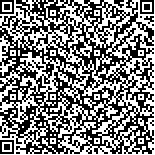| 摘要: |
| [目的]探索复杂地形、气候背景下适合当地特点的多年平均气温数据空间插值方法。[方法]在考虑海拔高度、数据源密度和空间化栅格大小等条件影响下,选择5种插值方法对1981—2010年四川省144个气象观测站点多年平均气温观测数据进行了空间插值,并采用预留检验站点和交叉验证两种方法对结果进行评估。[结果]空间化模型插值精度IDWE>OKE>MRM>OK>IDW; 不考虑海拔因素时中等密度站点插值精度最高,考虑海拔因素后高密度站点插值精度最高; 随着空间化尺度的不断增大,不考虑海拔因素的插值方法误差变化不大,考虑海拔因素的插值方法误差逐渐增大,且在空间栅格尺度大于4 000m后误差快速增加; 不同海拔数据源对插值结果有影响,采用3种方法插值的温度差在-098~305℃之间,但绝对温差大于1℃的区域仅占全省面积的076%~152%。[结论](1)空间化模型方法的选择对气温空间化精度影响较大,考虑了海拔等环境影响因素的模型比单纯的空间自相关模型精度更高; (2)数据源(气象站点)数量的减少会导致空间化误差增加,但并不明显; (3)随着栅格尺度逐渐变大,空间化误差逐渐增大,适宜尺度在500~2 000m; (4)气象站点海拔误差会影响气温空间化精度,但从占全省面积来看影响并不显著; (5)复杂地形会影响气温空间化效果,分区拟合精度优于不分区拟合。 |
| 关键词: 年平均气温空间化误差海拔影响因素四川省 |
| DOI: |
| 分类号:S1622 |
| 基金项目:四川省财政创新能力提升工程“大数据背景下主要农产品数量安全预警分析技术研究”(2016GYSH-004);四川省科技支撑计划软科学项目“基于精细区划的农产品气候品质认证评价指标体系研究”(2017ZR0045);四川省科技支撑计划项目“智慧果园智能化技术及装备引进与示范”(2016NZ0114) |
|
| STUDY ON SPATIAL INTERPOLATION METHOD AND INFLUENCING FACTORS OF ANNUAL MEAN AIR TEMPERATURE DATA IN SICHUAN PROVINCE |
|
He Peng1, 2,Zhang Yuan2, 3,Gao Wenbo1, 2,Jian Dongnan2,Lin Zhengyu4※
|
|
1.Institute of Agricultural Information and Rural economy,Sichuan Academy of Agricultural Sciences,Chengdu,Sichuan 610066,China; 2.Big data Center,Sichuan Academy of Agricultural Sciences,Chengdu,Sichuan 610066,China; 3.School of Tourism and Urban and Rural Planning,Chengdu University of Technology,Chengdu,Sichuan 610059,China; 4.College of Resources,Sichuan Agricultural University,Chengdu,Sichuan 611130,China
|
| Abstract: |
| This research aims to explore annual mean temperature data spatial interpolation method that is suitable for the topographical features of Sichuan province.Considering the influence of altitude,data source density and spatialized grid size,five methods were selected to interpolate the annual average temperature observation data of 144 meteorological observation stations in Sichuan province from 1981 to 2010,and the results were evaluated by two methods:reserved inspection site and cross validation.The interpolation precision of spatial model was IDWE>OKE>MRM>OK>IDW; the interpolation precision of medium density weather station was the highest when altitude factor was not considered,and the interpolation precision of high density station was the highest when altitude factor was taken into account.With the increasing of the cell size,the error of the interpolation method without considering the altitude factor did not change much,and the error of the interpolation method considering the altitude factor increases gradually,and the error increased rapidly when the spatial cell size was larger than 4 000m.The interpolation results were affected by different altitude data sources.The temperature difference of the three interpolation methods was between -098 and 305℃,but the absolute temperature difference greater than 1℃ only accounts for 076%~152%of the total area of the province.The main conclusions are showed as follows.(1)The choice of spatial model method has a great influence on the interpolation precision of air temperature,and the accuracy of the model considering the environmental factors such as altitude is higher than that of the simple spatial autocorrelation model; (2)With the decrease of the number of data sources(meteorological stations),the spatialization error increases,but it is not obvious; (3)With the grid size increasing gradually,the spatialization error increases gradually,and the suitable scale is 500~2000m; (4)The elevation error of meteorological stations will affect the spatial accuracy of air temperature,but it is not significant from the area of the whole province; (5)Complex terrain will affect the effect of spatialization of air temperature,and the fitting accuracy of zoning is better than that of non partitioned fitting. |
| Key words: annual mean temperature spatial error elevation influencing factors Sichuan province |

